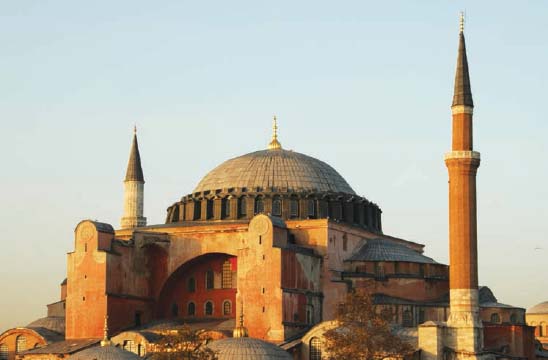The Medieval World, C. 400–1300Byzantine Art |
What is the Hagia Sophia? |
The Hagia Sophia is a centrally planned church rebuilt as part of a city-wide redevelopment project headed by Emperor Justinian and his wife, Empress Theodora, in Constantinople during the sixth century. The ambitious design was created by two mathematically inclined architects, Anthemius of Tralles and Isidorus of Mileos, who applied their understanding of geometry, optics, and physics to the project, particularly to the enormous dome, which appeared to float. The result of their work was so magnificent that it was said angels from heaven had miraculously aided the construction. There were concerns, however, about the forty windows that made up the dome’s base. Would they be strong enough to support such a heavy structure? In the year 558 C.E. there was an answer: the dome collapsed, not because of the windows, but due to weakness in the supporting piers. A reconfigured dome was constructed in its place, steeper and therefore even higher than the original. This new dome, along with extra supports, has survived ever since. Nearly one thousand years after its construction, the Hagia Sophia was converted to a mosque after the Ottomans took over Constantinople in 1453.

The Hagia Sophia was built in Constantinople (now called Istanbul) in the sixth century. This impressive structure is dominated by mathematically complex, light-filled domes.
